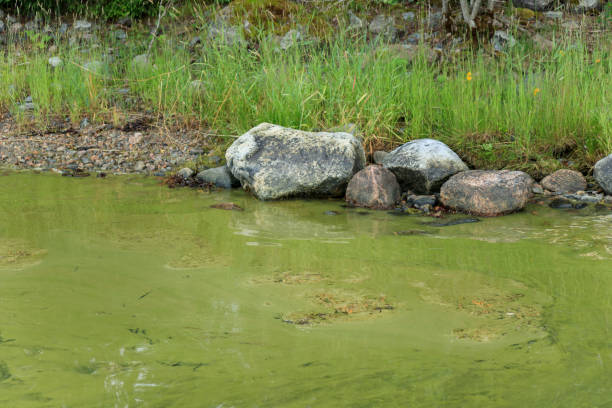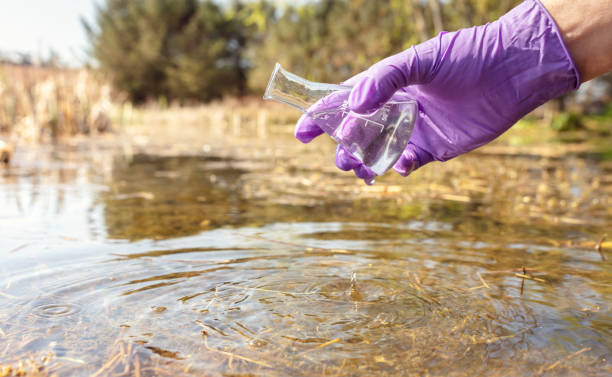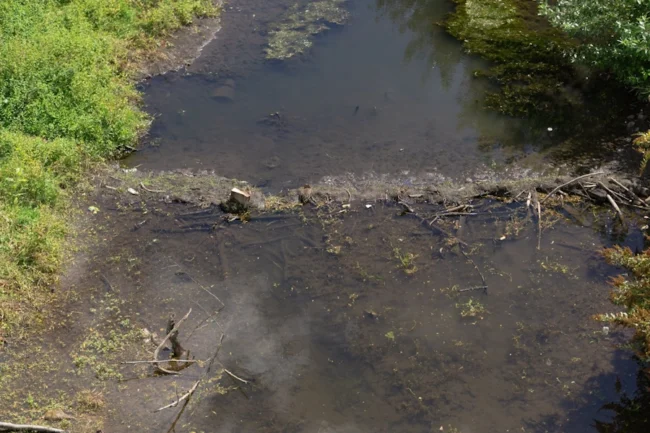Every time you gaze across the tranquil surface of a lake, you’re looking at one of nature’s most complex and dynamic ecosystems. Beneath that serene water lies a bustling microscopic metropolis teeming with billions of bacteria, each playing a crucial role in maintaining the delicate balance of aquatic life.
These tiny organisms, invisible to the naked eye, form the foundation of lake ecosystems and influence everything from water quality to the health of fish populations.
The microscopic residents: who lives in lake water?
Lake water harbors an extraordinary diversity of bacterial communities that vary dramatically depending on factors such as water temperature, nutrient levels, pH, and seasonal changes. Scientists have identified thousands of different bacterial species in freshwater lakes, each adapted to specific environmental niches.
- The most abundant groups include Proteobacteria, which often dominate lake bacterial communities and include species that can break down organic matter and cycle nutrients.
- Actinobacteria are particularly important in nutrient-poor lakes, where they excel at decomposing complex organic compounds.
- Bacteroidetes specialize in breaking down algae and other organic particles, while Cyanobacteria are photosynthetic bacteria that produce oxygen and sometimes form visible blooms on the water surface.
- Firmicutes and Verrucomicrobia round out the major groups, each contributing unique metabolic capabilities to the lake ecosystem. These bacteria form complex food webs, with some species consuming organic matter while others prey on smaller microorganisms or form symbiotic relationships with algae and other aquatic life.
Lake water flora

Lake bacteria don’t exist in isolation—they form intricate relationships with the lake’s plant life, including algae, aquatic plants, and phytoplankton. These relationships are fundamental to lake ecology. Bacteria living on the surfaces of aquatic plants help break down dead plant material, recycling nutrients back into the water column. Some bacteria form beneficial partnerships with algae, providing essential nutrients in exchange for organic compounds produced through photosynthesis.
Phytoplankton, the microscopic floating plants that form the base of most lake food chains, depend heavily on bacterial partners. Bacteria help these tiny plants access nutrients like nitrogen and phosphorus, which are often in short supply in lake water. In return, phytoplankton release organic compounds that bacteria use for energy and growth.
During seasonal changes, bacterial communities shift dramatically as different types of aquatic plants grow and die back. Spring algae blooms, for example, create feast-or-famine conditions that favor fast-growing bacterial species, while the steady decomposition of fallen leaves in autumn supports different bacterial communities specialized in breaking down complex plant materials.
Environmental guardians and nutrient cyclers
Lake bacteria serve as nature’s recycling system, breaking down dead organic matter and converting it into forms that living organisms can use. They play essential roles in the nitrogen, phosphorus, and carbon cycles that keep lake ecosystems functioning. Without bacterial decomposition, lakes would become clogged with dead material and depleted of the nutrients necessary for life.
Many lake bacteria also act as natural water purifiers, consuming pollutants and excess nutrients that could otherwise harm the ecosystem. Some species can break down oil spills, pesticides, and other contaminants, while others help prevent harmful algae blooms by competing for nutrients.
The dark side: when lake bacteria become dangerous

While most lake bacteria are harmless or beneficial, some species can pose risks to human health and ecosystem stability. Understanding these potential dangers is crucial for anyone who swims, fishes, or drinks from lake water sources.
Pathogenic bacteria
It represent the most direct threat to human health.
- Escherichia coli (E. coli) can enter lakes through agricultural runoff, sewage contamination, or wildlife waste, causing severe gastrointestinal illness in swimmers and contaminating drinking water supplies.
- Salmonella species can survive in lake water for extended periods and cause food poisoning-like symptoms.
- Vibrio bacteria, while more common in coastal waters, can also inhabit freshwater lakes and cause skin infections and gastroenteritis. These bacteria are particularly dangerous for people with compromised immune systems or open wounds.
Cyanobacteria
Cyanobacteria, while technically bacteria rather than algae, deserve special attention due to their ability to produce potent toxins. When conditions are right—typically warm temperatures, abundant nutrients, and calm water—cyanobacteria can multiply rapidly to form visible blooms that turn water green, blue, or reddish. These blooms can produce toxins called cyanotoxins, including microcystins and anatoxins, which can cause liver damage, neurological problems, and skin irritation in humans and animals.
Antibiotic-resistant bacteria
They are an emerging concern in lake ecosystems. Agricultural runoff containing antibiotics can create selective pressure that favors resistant bacterial strains, potentially creating reservoirs of dangerous pathogens that don’t respond to standard medical treatments.
Seasonal dynamics and environmental factors
Lake bacterial communities undergo dramatic seasonal changes that affect both their beneficial and potentially harmful activities. Spring warming and nutrient runoff from melting snow create ideal conditions for bacterial growth, leading to rapid population increases. Summer heat can stress bacterial communities while also creating conditions favorable for harmful blooms.
Fall brings a different set of challenges as decaying plant matter increases organic loading, while winter ice cover creates oxygen-poor conditions that favor different bacterial species. Climate change is altering these seasonal patterns, potentially increasing the frequency and severity of harmful bacterial blooms.
Water temperature, nutrient levels, pH, and oxygen content all influence which bacterial species dominate at any given time. Human activities such as agriculture, urban development, and sewage discharge can dramatically alter these conditions, sometimes favoring harmful species over beneficial ones.
Staying safe while enjoying lake waters
Understanding lake bacteria doesn’t mean avoiding these beautiful ecosystems, but rather learning to enjoy them safely. Always check local water quality reports before swimming, especially after heavy rains or during warm weather when bacterial levels tend to be highest.
Avoid swimming in areas with visible algae blooms or strong odors, and never drink untreated lake water.
If you do swim in lakes, shower afterward and avoid swallowing water. People with compromised immune systems, young children, and elderly individuals should be especially cautious. For those who fish, proper cleaning and cooking of fish can eliminate most bacterial risks.
Conclusion
Lake water bacteria represent one of nature’s most fascinating and important ecosystems. While some species can pose risks to human health, the vast majority of lake bacteria are essential for maintaining healthy aquatic environments. By understanding these microscopic communities and respecting their complexity, we can better protect both lake ecosystems and ourselves while continuing to enjoy these precious natural resources.
The next time you visit a lake, take a moment to appreciate the invisible world beneath the surface—billions of bacteria working tirelessly to maintain the delicate balance that makes these ecosystems possible. Their tiny lives have enormous impacts, shaping everything from water quality to the abundance of fish and wildlife that make lakes such treasured parts of our natural world.
Resources and links
- Newton, R.J., Jones, S.E., Eiler, A., McMahon, K.D. & Bertilsson, S. (2011) ‘A guide to the natural history of freshwater lake bacteria’, Microbiology and Molecular Biology Reviews, 75(1), pp. 14–49.
- Eiler, A. & Bertilsson, S. (2007) ‘Lake Bacterial Communities’, in Hurst, C.J. (ed.) Manual of Environmental Microbiology, 3rd edn. Washington, DC: ASM Press, pp. 153–166.
- Whitman, W.B., Coleman, D.C. & Wiebe, W.J. (1998) ‘Prokaryotes: The unseen majority’, Proceedings of the National Academy of Sciences, 95(12), pp. 6578–6583.
- National Oceanic and Atmospheric Administration (NOAA). (2023) Harmful Algal Blooms. Available at: https://oceanservice.noaa.gov/hazards/hab/
- U.S. Environmental Protection Agency (EPA). (2024) Bacteria and Water Quality. Available at: https://www.epa.gov/nutrient-policy-data/bacteria-and-water-quality
- World Health Organization. (2020) Volume 1, Coastal and Fresh Waters. Geneva: WHO. Available at: https://www.who.int/publications/i/item/9241545801
- Zwart, G., Crump, B.C., Kamst-van Agterveld, M.P., Hagen, F. & Han, S.K. (2002) ‘Typical freshwater bacteria: An analysis of available 16S rRNA gene sequences from plankton of lakes and rivers’, Aquatic Microbial Ecology, 28(2), pp. 141–155.
- Newton, R.J. & McLellan, S.L. (2015) ‘Freshwater Microbiome: Structure, Function, and Dynamics’, in Hurst, C.J. (ed.) Cham: Springer, pp. 1–28.
- American Society for Microbiology. (2022) ‘Freshwater Bacteria: Essential Players in the Aquatic Ecosystem’. Available at: https://asm.org/Articles/2022/June/Freshwater-Bacteria-Essential-Players-in-the-Aquatic-Ecosystem

Leave a Reply